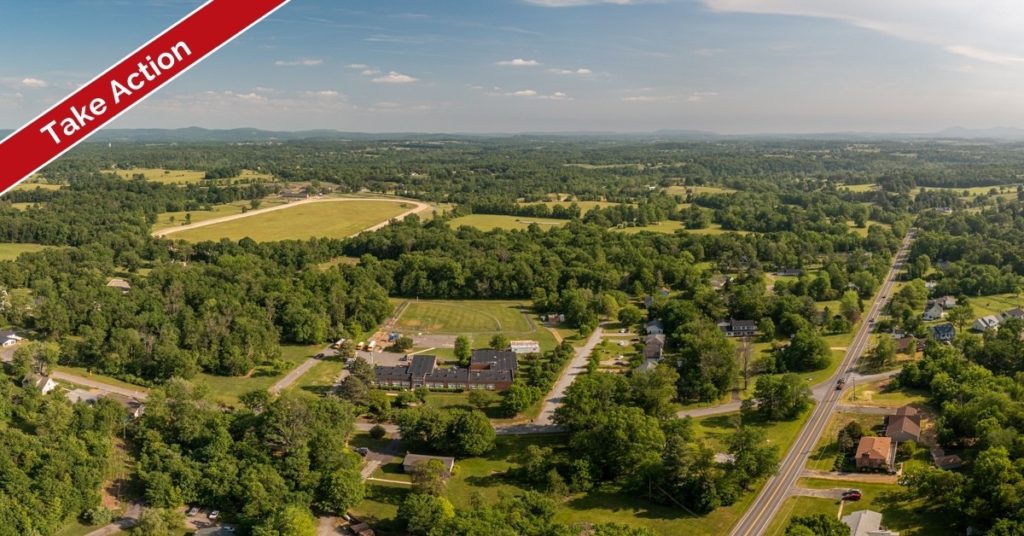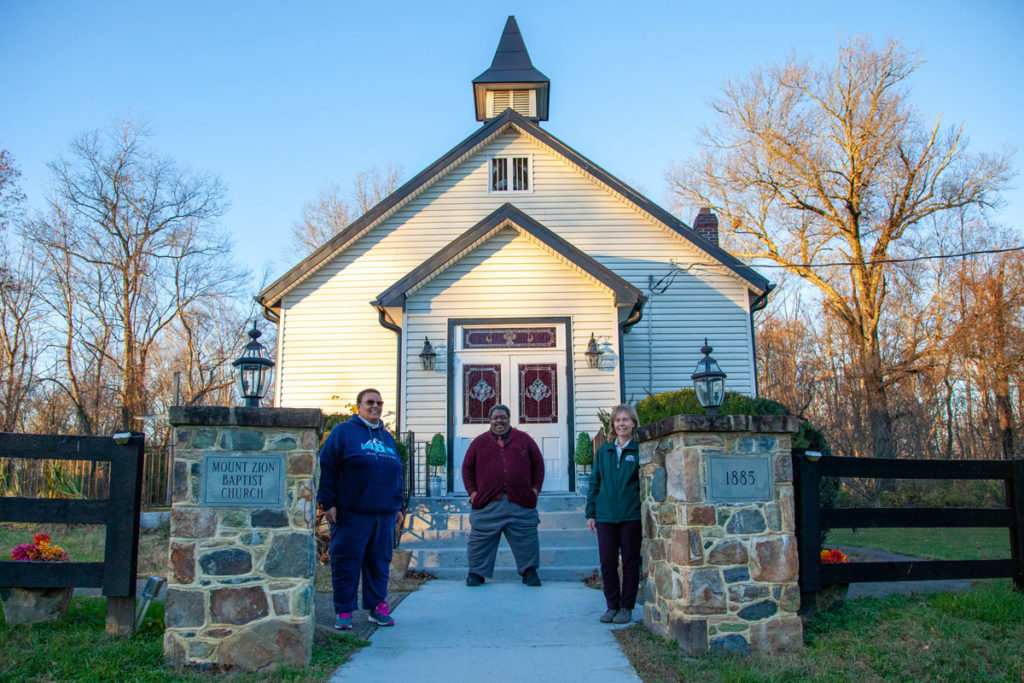
The signs at both entrances to the village of St. Louis proudly describe the hamlet as one of the oldest African American townships in Loudoun. It was built on land purchased by freed slaves for $20 an acre after Emancipation.
Their family names—McQuay, Berryman, Howard and others—go back five or more generations, forever memorialized in the names of various roads and structures that remain today. The story goes that Phillip McQuay was responsible for the village name. He moved to St. Louis, Missouri after the Civil War, and when he returned to Loudoun, the community dubbed him “Little St. Louis.” The name stuck and took on a life of its own.
Old Challenges and a New Threat
St. Louis and its residents have faced challenges, past and present, that echo those of African American communities across the country.
Land sold to Black residents in those days was often of poor quality for farming and Black communities were neglected by local government; St. Louis is no exception. It is largely a wetlands area with poor drainage marked by the unmistakable odor of “rotten eggs” in the tap water. Many residents relied on springs for drinking water well into the mid-20th century. Septic-based indoor plumbing lagged, and once it was installed, high water tables often led to failed septic fields. At the same time, shallow wells today remain susceptible to drying up as groundwater levels fluctuate with weather patterns and increased development.
By the end of the century, increased development pressure became the bigger threat to St. Louis. “As urban expansion began to reach St. Louis… new, more expensive homes went up, property taxes also went up, which had the domino effect of many ancestral families selling their land and homes,” Mt. Zion Baptist Church Pastor Charles Thompson wrote in an editorial to the Middleburg Eccentric. Today’s hot housing market puts the strong affordable housing stock in St. Louis at even greater risk.

Residents are also worried about losing St. Louis’ contributions to Loudoun’s African American history—its historic cemetery, undiscovered graves of enslaved people, and the cultural history associated with the site of the latest development plan for the village.
Unfortunately, current zoning perpetuates the risk that St. Louis will lose all of those resources. Most recently, a developer, Mojax LLC, initiated a 27-home development on 16 acres in the village, and is in the process of drilling the associated wells. But if it were not this developer, it could be any other developer, under the county’s existing zoning. When too many wells are too close to one another, they can interfere with each other and draw an already low water table down even farther. In a village like St. Louis, where the water supply is already fragile, the result is that some wells will go dry and property owners will be forced to dig another, probably deeper well. Running as much as tens of thousands of dollars, that’s a pricey consequence for families already on the brink of being priced out by land-use decisions in the area. But without new wells, their homes would be worthless.
The Need for Community-led, Village-level Planning
When the 2019 Comprehensive Plan was developed, an in-depth review of Loudoun’s historic rural villages and their special land use needs was not part of that process. Each village is unique and should have an updated vision for the future based on its current-day needs and challenges. And although the Zoning Ordinance is being updated to match the Comprehensive Plan, prudent zoning in these villages really must be informed by that crucial first step of a community-led review.
Given the immediate water supply issue and impending development in St. Louis, along with longer-term development pressures resulting from a rebounding housing market, this process should begin immediately in the village of St. Louis. Supervisor Buffington has already proposed a community planning and zoning process for St. Louis, and this would be a good place to begin.
Still, this does not solve an even more immediate problem facing St. Louis: what to do about the 16-acre Mojax-owned Middleburg Preserve II property?
Unlinking St. Louis and Aldie Real Estate Deals
Last fall, in order to protect the water supply there, the Board of Supervisors voted to purchase the land slated for the proposed Middleburg Preserve II/Mojax development. When the developer rejected the county’s offer, the county agreed to swap county-owned land the developer wanted in the village of Aldie (known as Aldie Assemblage) for the developer’s land in St. Louis.
Unsurprisingly, the public outcry in Aldie was overwhelming. A local resident came forward with an offer to buy the county-owned parcels in Aldie in order to avoid the land swap that would allow the developer to build on the historic property there. A public hearing for this proposal (and any others that might be offered) is scheduled for 6 p.m. on June 9.
In the meantime, Loudoun voted 9-0 to end negotiations with Mojax, leaving the land and the water supply in St. Louis at risk.
Better Solution Needed for St. Louis
Loudoun County has an opportunity to protect the health, safety and welfare of St. Louis residents in two distinct ways: 1) initiate community-led planning for the future of St. Louis; and 2) find a better solution for the Mojax-owned land.
The Board has scheduled a separate public input session, at 5 p.m. on June 9, to hear residents’ opinions regarding the Mojax-owned Middleburg Preserve II in St. Louis.
Take Action: Ask the Loudoun Board to Protect St. Louis’ Water Supply
- Ask the Loudoun Board of Supervisors to invest now to protect the health, safety and welfare of existing residents with the Middleburg Preserve site and start the comprehensive planning and zoning process needed for a sustainable future in St. Louis. Send a letter to the board using our action letter campaign (we’ve also embedded the form below).
- Attend the public input session at 5 p.m. on June 9 and express your opinion about the future of St. Louis.
Next steps by Loudoun County:
June 1: Board of Supervisors vote to direct staff on work plans. The Planning and Zoning initiative for St. Louis proposed by Tony Buffington should be a priority.
June 9 @ 5:00 PM: St. Louis Public Input Session. This is your chance to share your thoughts on what the Board should do regarding the Middleburg Preserve II development site. You can participate electronically or in person. Call 703-777-0204 to sign up in advance. If you speak in person you can also sign up when you arrive. The public input session will be held in the Board Meeting Room at the County Government Center, 1 Harrison St., Leesburg, VA.
June 9 @ 6:00 PM: Aldie Public Hearing Session. You can also sign up to speak about the proposal that has been submitted to purchase the Aldie Assemblage. See above for sign-up details
